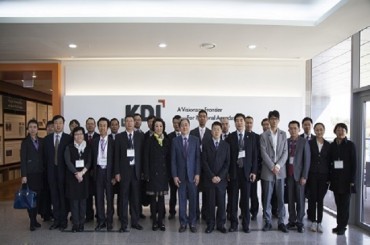
North Korea’s Missile Administration successfully conducts a test-fire of the Hwasongpho-11-Da-4.5, a new tactical ballistic missile, equipped with a 4.5-ton warhead on Sept. 18, 2024, in this file photo provided by the North’s official Korean Central News Agency. (Image courtesy of Yonhap)
SEOUL, Oct. 31 (Korea Bizwire) — North Korea fired what appeared to be a new type of solid-fuel intercontinental ballistic missile (ICBM) toward the East Sea on Thursday, South Korea’s military said, in a move apparently aimed at bolstering Pyongyang’s leverage head of the U.S. presidential election next week.
Thursday’s launch also came hours after the defense chiefs of South Korea and the United States jointly condemned the North’s troop deployment to Russia with “one voice” in the “strongest” terms during the allies’ annual defense talks at the Pentagon on Wednesday.
The Joint Chiefs of Staff (JCS) said it detected the missile, fired on a lofted trajectory, at about 7:10 a.m. from the North’s Pyongyang area and said it flew about 1,000 kilometers before landing in the East Sea. When fired at a normal angle, ICBMs are capable of striking the U.S. mainland.
“Early assessment showed there is a possibility (North Korea) may have test-fired a new type of solid-fuel long-range ballistic missile,” JCS spokesperson Lee Sung-jun told a press briefing.
When asked about the timing of the latest launch, Lee said the North appears to have launched the missile to gain leverage ahead of the U.S. election, in a break from the current situation of intensifying scrutiny and criticism over the North’s troop deployment to Russia.
North Korea’s troop deployment to Russia has spawned concerns about an escalation of Moscow’s protracted war in Ukraine. The U.S. said North Korea has so far sent around 10,000 troops to eastern Russia for training, with some of them having moved close to Russia’s western region near the border with Ukraine.
Last week, the North’s foreign ministry said that any reported dispatch of its troops to Russia, if true, aligns with international law, while Russian President Vladimir Putin said Moscow’s military cooperation with Pyongyang is “our business,” mentioning a bilateral treaty that includes a mutual defense clause.
The JCS condemned the launch as a major provocation threatening peace and stability on the Korean Peninsula and the international community and vowed to maintain a full readiness posture amid a robust South Korea-U.S. combined defense posture against any provocation by the North.
“The defense chiefs of South Korea and the U.S. agreed to demonstrate the alliance’s determination for a response by strongly carrying out various measures, such as combined drills involving the deployment of U.S. strategic assets,” the JCS said.
Thursday’s launch came 10 months after the North fired a Hwasong-18 solid-fuel ICBM on Dec. 18.
Solid-fuel missiles are considered to be harder to detect ahead of a launch compared with liquid-fuel ones as they require fewer preparation procedures, such as the injection of fuel.
Compared with the previous launch, Lee of the JCS raised the possibility of the North firing the ICBM from a new 12-axle transporter erector launcher capable of carrying a longer missile the North unveiled last month.
North Korea last fired multiple short-range ballistic missiles on Sept. 18.
(Yonhap)






